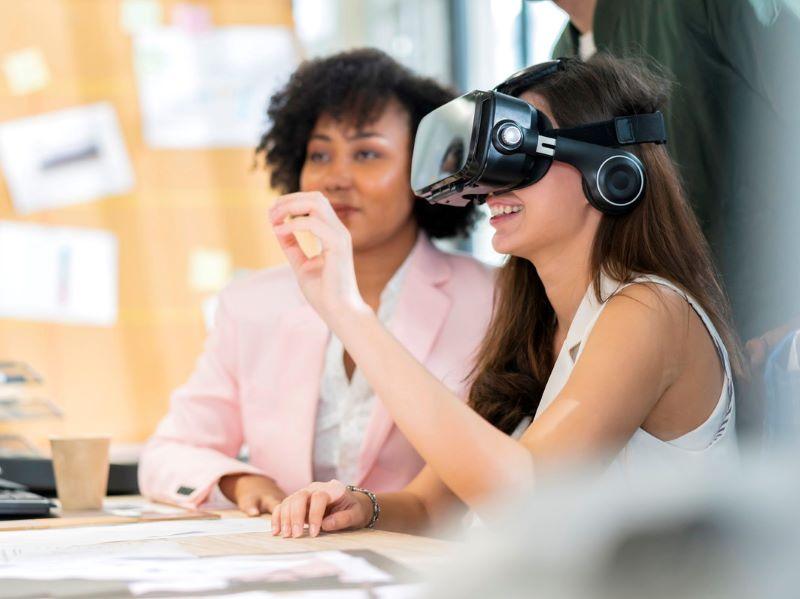
Augmented reality in teaching: key challenges and how to overcome them

I was part of a StoryFutures-funded project in 2020 that sought to engage students in online learning and performance-making through the accessible integration of augmented reality (AR) in the classroom. Our project, Beyond the Zoom and Gloom, identified key challenges in integrating AR into online teaching and performance-making and created an open-source toolkit for effectively meeting those challenges.
What follows are some broad lessons learned for how you might navigate said challenges when integrating AR into your teaching. As a drama and theatre studies academic, my point of view and case studies are performative.
- Spotlight collection: Tech solutions for the post-Covid campus
- Answering common questions about immersive experiences
- THE podcast: is AI in higher education worth the hype?
Challenge 1: Storytelling
This is always a pedagogic challenge and it is always a performance challenge. What is the story? Who is the audience? How should the story be told? When it comes to integrating new, immersive technologies in performance-making, too often the technologies receive the majority of a creator’s attention. This is often to the detriment of the story. It is an easy trap to fall into. If you’re using AR in teaching for the first time, remember not to lose sight of the story you are telling (the learning outcomes which the student will achieve, for example). Try to conceive of the AR as the best way of telling your story. This might mean you focus on slightly different things than you did when you were not using AR. In this way the AR becomes essential, not tangential.
So, what kinds of stories work with AR?
AR allows the spectator or student to see something layered into their space. When teaching online, this can make for an exciting, dynamic experience. It might be that interactivity is precisely the thing you want to gain by using AR in teaching. Or that for one lesson, the AR will engage students because it is novel. In theatre terms, we might call this “spectacle”. Aristotle believed that spectacle was the least important aspect of drama and plot the most important. But he still listed it as an essential aspect. In teaching, the story remains essential, but spectacle can be useful in grabbing attention, focusing attention and sparking initial interest. In Minds on Fire, pedagogue and historian Mark C. Carnes writes about how important having fun in a classroom can be for learning. There is a value in a bit of pizzazz.
The next step beyond that is to think through how the AR can become more essential to the story itself. For example, because AR assets exist in the world of the student, they might assist you in demonstrating scale (for example, this is how big the Mona Lisa is; or this is how far away citizens were from orators in the ancient Greek assembly). AR can show you objects in three dimensions (for example, this is what a mastodon skeleton looks like from all angles; or this is how a chemical compound comes together). There are some sample lessons on integrating AR into classrooms via the links below.
Challenge 2: Classroom hierarchies
Teaching with AR is new territory and while academics will have the experience, skills and information to teach students, it might be most useful to frame the AR classroom as one of mutual discovery. In The Ignorant Schoolmaster, contemporary French philosopher Jacques Rancière invites educators to teach what they themselves do not know. To get to the next step in your AR storytelling, you might position the students as fellow storytellers. Instead of deciding how AR will best help teach a topic, frame a research question to include AR. For example: How can AR innovate accounting? How can AR be used to tell histories? In what ways does AR challenge aesthetic philosophy? To answer these questions, students will need to know the disciplinary content and develop knowledge in AR creatively. Where they go may not be somewhere you had conceived of. I have written on the playful dissolving of classroom hierarchies in my chapter of Rancière and Performance.
Challenge 3: Interdisciplinarity
Our own discipline is not enough. As such, it is essential that we collaborate. What we can achieve in this space together is always more (and certainly more interesting) than what can be done in disciplinary isolation. If you want to integrate AR into your classroom, see if there are colleagues in other departments who want to do it too. It might be a discipline that does not immediately come to mind. Since I have been working in this space, I have been contacted by staff from a range of departments, all interested in wrestling with this topic and each bringing their own perspectives and know-how. Co-designing learning experiences can further dissolve classroom hierarchies and drive innovation in storytelling.
Storytelling, classroom hierarchies and disciplinary constraints are not the only challenges to face when integrating AR into higher education. Demystifying AR, access to technologies, and time constraints must also be overcome. But hopefully this focus on storytelling invites new reflections on these areas.
Will Shüler is senior lecturer in drama and theatre studies at Royal Holloway, University of London.
He was shortlisted for Most Innovative Teacher of the Year in the Times Higher Education Awards 2022. A full list of shortlisted candidates can be found here.
If you would like advice and insight from academics and university staff delivered direct to your inbox each week, sign up for the Campus newsletter.
Additional Links
You can find sample lessons on integrating AR into drama modules in Will’s toolkit, AR Story Decks, under lesson plans.
Eon Reality has case study examples of AR and VR being used in higher education.


